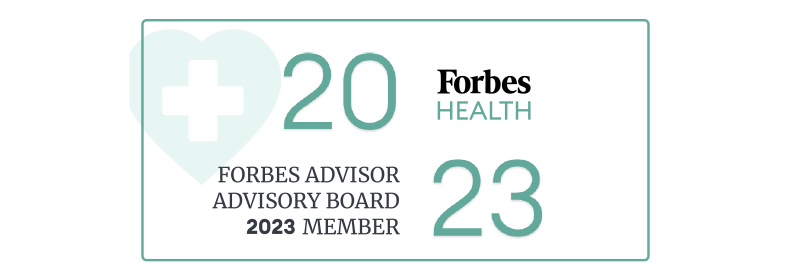Many of us know about the most obvious signs of aging – wrinkles, trouble remembering where the keys are, and a little extra belly fat to name a few. But, there are other more subtle signs that give you an idea of how well your body is holding up as you get older. I explored some of the key indicators of fast aging in the earlier post below, and now I’d like to highlight some more surprising symptoms of poor health. The problem with many illnesses is that, by the time they become obvious enough for you and/or your doctor to notice them, they may be difficult to treat. Here are some early warning signs to watch out for.
Yellow Eyelid Skin
Have you noticed areas of yellow skin above or below your eyes? Called xanthelasmata, these patches are actually collections of cholesterol beneath the skin that, according to Medical News Today, could indicate increased risk of heart problems. A study conducted at the University of Copenhagen and published in the British Medical Journal found that people with these patches could be more likely to have a heart attack or develop heart disease, even with common risk factors like high cholesterol taken into consideration. The danger was highest for men with xanthelasmata between the ages of 70 and 79, with 53% at risk of cardiovascular issues compared to 41% of males with no xanthelasmata within that age range. If you’re concerned you may have some of these yellow patches, talk to your doctor about having them checked out.
Facial Asymmetry
Facial asymmetry is one of the first indicators of a stroke. While a stroke may seem like a very serious and apparent event, being able to quickly and accurately determine if you or a family member are having one is critical to survival and recovery. LIVESTRONG lists more specific symptoms like drooping on one side of your face, a crooked smile, or uneven eyebrows as stroke warning signs. If you or a loved one are experiencing any of these symptoms (possibly in addition to facial numbness and/or paralysis), call 911.
Shortness of Breath
It’s normal to feel winded after a good workout, but HuffPost warns shortness of breath after mild to moderate activity like climbing a few stairs could be an early sign of heart disease. You may remember the post where I shared some sobering statistics about cardiovascular disease, like the fact that it accounts for about 1 in 3 deaths in the United States, or that it kills more people every year than all forms of cancer and chronic lower respiratory disease combined. Scary stuff, but there’s a lot you can do in terms of diet, supplements, and other lifestyle choices to help lower your risk of heart problems. It’s also important to make sure you’re getting the proper tests—click here to read about the top tests for heart attack prevention that could save your life.
Slowed Movement
Prevention reports a decrease in walking speed may be a sign of early Alzheimer’s that shows up before any cognitive symptoms. They point to recent research suggesting a link between the buildup of beta-amyloid, which form the plaque associated with Alzheimer’s-related brain damage, and a slower gait. For the study, researchers scanned the brains and measured the walking speed of 128 people with the average age of 76 and found that beta-amyloid accounted for up to 9% of the variance in participants’ walking speed.
Skin Changes
When looking for indicators of fast aging, start with your skin. Aside from obvious symptoms like wrinkles and sagging, changes in skin color and tone can be signs something is off. As internist and anti-aging specialist Lorraine Maita told Forbes, yellowish skin can signify liver problems, while skin that’s tinted gray may be the result of kidney trouble. And the Chopra Center advises watching out for skin that’s suddenly dry and flaky, since this can indicate a thyroid problem. While age-related slowing of the thyroid gland—a condition known as hypothyroidism—is more common in women, it can affect men as well. As Harvard Health warns, untreated hypothyroidism is associated with an increased risk of high cholesterol and heart disease, so check with your doctor about skin dryness or other symptoms like unexplained weight gain.
Hearing Loss
Dr. Oz says this is the biggest red flag you’re aging too fast, and it can be a symptom of dementia or Alzheimer’s disease. As he explains, the plaques that form between nerve cells in your brain as a result of Alzheimer’s affect the ability of your various brain centers—including the one responsible for hearing—to function properly. Although scientists haven’t yet discovered how to stop age-related hearing loss, you can take steps to prevent damage. The National Institute of Deafness and Other Communication Disorders (NIDCD) suggests minimizing exposure to loud noises from sources like firearms, lawn mowers, loud music, and leaf blowers and wearing ear protection when possible. Concerned you may have a hearing problem? The NIDCD offers a questionnaire to help you determine if you need to have your hearing checked.
Hairless Feet/Toes
This is another sign of accelerated aging highlighted by Dr. Oz, who says hairless, shiny skin around your feet could be a sign of plaque buildup in your arteries. When arteries become clogged, lack of blood flow causes blood vessels under your skin to die off, killing hair follicles—hence the hairless toes. If you’re concerned about clogged arteries or other invisible symptoms of heart trouble, see my list of top life-saving tests for heart attack prevention here. You can also learn about the ways dietary changes can improve your heart health here.
Joint Pain
If your knees, hips, or other joints hurt, you may have osteoarthritis. How can you prevent the breakdown of cartilage that defines this condition? Men’s Health recommends hitting the gym, since overweight and obese people are almost three times more likely to have osteoarthritis in their knees. If you do receive an osteoarthritis diagnosis, it’s important to keep moving. In an in-depth report on the condition, The New York Times says moderate, low-impact exercise helps keep arthritic joints from stiffening. And the weight loss that often comes from exercising can make a huge difference when it comes to relieving joint pain. According to the Arthritis Foundation, a 2005 study found overweight and obese participants with knee osteoarthritis were able to remove four pounds of pressure from their knees for every pound of weight lost. Weight loss can also help reduce the general wear and tear on your joints that comes with aging.
Sun Damage
Are you starting to see age spots on your hands and face? Do you have seemingly premature crow’s feet? You may be aging yourself by spending too much unprotected time in the sun. Also called liver spots, age spots are defined by the Mayo Clinic as dark spots on the skin that are common in adults over 50 but can also affect younger people, “especially if they spend a lot of time in the sun.” And those crow’s feet? Manhattan dermatologist Neal Schultz, MD told Men’s Health they could indicate a risk of future facial cancer if they’re caused by squinting in the sun. To prevent early aging caused by sun damage, wear sunscreen every day and protect your eyes with sunglasses that provide UV protection.
Now that you know some of the key indicators of fast aging, what can you do to slow the process down? Check out my tips for living younger longer as well as steps you can take to look 10 years younger.
Are you getting the nutrients you need for long-term health? Download my Top 10 Supplements For Men PDF to learn about the most critical supplements you need.
Myles Spar, MD, MPH is board certified in Internal Medicine and in Integrative Medicine. As a clinician, teacher and researcher on faculty of the top Integrative Medical Center in the U.S., he has led the charge for a more proactive, holistic and personalized approach to care that focuses on cutting edge technology and preventative care. Dr. Spar has been a consultant with the NBA, presented a TEDx Talk, appeared on national television, and been featured in publications such as the Men’s Journal and the Los Angeles Times. He is National Director and V.P. of Medical Services for AndHealth, a digital health company utilizing lifestyle medicine approaches to reverse chronic illness. He is available on a limited basis to consult with individual patients interested in a personalized approach to optimal performance and health.



